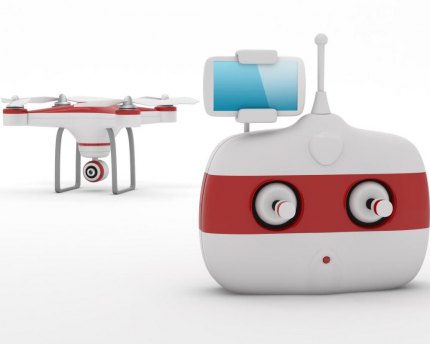
And we know drones can be deadly when used by the military to deliver bombs.
But drones aren’t a recent invention.Indeed, the earliest drones took flight during World War I -- not that long after Wilbur and Orville Wright's first flight in 1903. Here is the rundown, along with links for further study:
World War I: Britain developed the Aerial Target, a small radio-controlled aircraft, during the First World War. The British tested it in March 1917. The American equivalent, an aerial torpedo called the Kettering Bug, first flew in October 1918, according to the website for the Imperial War Museums.
The Kettering Bug was invented by Charles F. Kettering of Dayton, Ohio. (“Bug” is a nickname. The invention is called the Kettering Aerial Torpedo.) The aircraft was “launched from a four-wheeled dolly that ran down a portable track,” according to the National Museum of the United States Air Force website. After a certain amount of time, a “control closed an electrical circuit ... shut off the engine,” the website explains. The wings were released, and the aircraft plunged, delivering 180 pounds of explosives.
Despite the promise of this invention, drones were not put into routine operating use during the World War I.
Postwar years: The English kept working on it. In 1935 the British produced a number of radio-controlled aircraft as targets for training purposes, according to the Imperial War Museums website. “It's thought the term drone started to be used at this time, inspired by the name of one of these models, the DH.82B Queen Bee.”
The U.S. also manufactured drones for target practice, the website recounts.
“Joe, regarded as an experienced patrol plane commander, and a fellow-officer, an expert in radio control projects, was to take a drone Liberator bomber loaded with 21,170 pounds of high explosives into the air and to stay with it until two 'mother' planes had achieved complete radio control over the drone. They were then to bail out over England; the drone, under the control of the mother planes, was to proceed on the mission which was to culminate in a crash-dive on the target, a V-2 rocket launching site in Normandy. The airplane... was in flight with routine checking of the radio controls proceeding satisfactorily, when at 6:20 p.m. on August 12, 1944, two explosions blasted the drone resulting in the death of its two pilots. No final conclusions as to the cause of the explosions has ever been reached.”
Vietnam War: During the Vietnam war, the military deployed reconnaissance drones. “Drones also began to be used in a range of new roles, such as acting as decoys in combat, launching missiles against fixed targets and dropping leaflets for psychological operations,” according to the Imperial War Museums.
Today: Drones are still used in the military, but they are also used for recreation and even commercial purposes. According to the Federal Aviation Administration, there are 866,102 registered drones. More than 519,000 are recreational, and most of the rest are commercial.
Resources:
- The Federal Aviation Administration: Unmanned Aircraft Systems by the numbers.
- Imperial War Museums: A brief history of drones.
- John F. Kennedy Presidential Library and Museum: Joseph P. Kennedy Jr.
- National Museum of the United States Air Force: Kettering Aerial Torpedo Bug, April 7, 2015.
Related:
In brief: Owners required to register drones